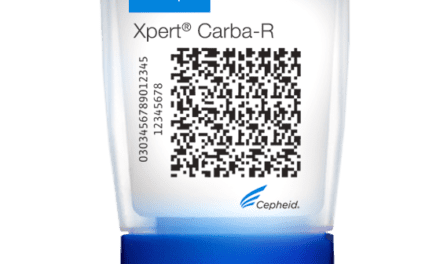Lower reimbursements, intense competition, and heightened expectations are forcing labs to search for innovative solutions
By Brad Bostic
While lab managers strive to gain their share of the nearly 6.1 billion clinical lab tests performed annually in the United States, they now face strong headwinds in the form of reduced reimbursement levels, aggressive competitors, and increased demands from ordering providers and patients.1
On the heels of cuts already instituted over the past several years, both independent and hospital-based labs will feel the sting of shrinking reimbursement levels brought about by new rules promulgated by the Centers for Medicare and Medicaid Services (CMS), which will go into effect in January 2018. These rules, including the Protecting Access to Medicare Act (PAMA) and Medicare Access and CHIP Reauthorization Act (MACRA), may cut nearly $4 billion in lab test fees over the next 10 years.2
At the same time, the increasing prevalence of high-deductible healthcare plans means that more consumers are footing the bill for their diagnostic testing, resulting in more savvy and discriminating healthcare consumers. This trend is putting pressure on labs and the providers they serve to elevate their service levels dramatically.
To thrive in the face of such challenges, clinical labs must find new ways to counterbalance lost revenue through profitable growth and efficiencies, while also better serving providers and patients. The new Cloud technology-powered strategy that has sprung up, known as healthcare relationship management (HRM), promises to help clinical laboratories deliver better customer service while driving more profitable business and making it easier to succeed under burdensome new regulations such as PAMA.
Access to Insight Is Key
Since laboratory data are estimated to make up more than 80% of a patient’s health record, labs have the potential to deliver significant improvements to the healthcare journey through the power of actionable patient and provider insights.3
As a way to harness the power of an abundance of data that would otherwise remain locked in silos, labs are embracing HRM technology to streamline critical workflows and offer an instant view of the lab’s overall performance and the health of each specific client relationship.
Such insights can also help labs keep up with high-impact regulations, such as PAMA and MACRA, both of which create burdensome reporting requirements. PAMA requires laboratories with more than $12,500 in Medicare revenues and more than 50% of revenue from Medicare to submit private payor claims data to CMS for use in revising Medicare and Medicaid payment rates. By March 31 of this year, for example, PAMA rules required labs to report on all charges, payments, and test volumes for private payor claims that occurred between January 1 and June 30, 2016, or face a $10,000 daily fine.
Likewise, MACRA requires labs to implement significant new performance measures, reporting requirements, and compliance rules in order to drive payment and delivery reforms for clinicians and health systems, including government programs and commercial payors. Its goal is to transform the healthcare system from the traditional fee-for-service payment model to new risk-bearing care models.

Figure 1. Laboratory data often reside in multiple silos, making them difficult to access and analyze.
To meet these reporting requirements, lab managers need instant access to up-to-date information that enables them to make important decisions, pinpoint areas for improvement, and report to government agencies. These tasks can be difficult, because the data necessary to make decisions are often isolated in a variety of separate systems, including billing systems, laboratory information systems (LIS), laboratory information management systems (LIMS), spreadsheets, and others (see Figure 1).
For many labs, gaining a complete picture of each provider or patient requires an exorbitant amount of time and energy. Some labs may even employ teams of analysts tasked with compiling and reviewing data from multiple sources. This tremendous manual effort results in data that are, at best, reactive in nature, prone to human error, and don’t always convey the big picture needed to guide strategic decisions.
For example, a performance report may show that overall order volume is up across the organization, but fail to acknowledge the fact that a number of clients are unhappy and on the verge of taking their business to another lab. Since most labs conduct quality reviews every 90 to 120 days, client issues can often go unresolved for weeks or even months. By the time the issues are discovered, it may be too late.
The Rise of Healthcare Relationship Management
The difficulty in connecting and understanding disparate data sources has given rise to HRM solutions specifically designed to give laboratory managers access to real-time analytics, automated workflows, and secure messaging, in order to make more-informed decisions and quickly take action.
HRM platforms tap into the abundance of clinical and business data that reside in various systems throughout the lab, pull them into the HRM platform in an organized set of customer profiles, analyze the data, and deliver insights by way of easy-to-understand dashboards. Additionally, HRM drives action automatically based on insights that are uncovered, far surpassing what is possible with standard dashboards from business intelligence tools. With a comprehensive view of each client, lab managers can provide proactive service, quickly resolve issues, and free up valuable time to better optimize the lab’s operations and relationships.
HRM differs from generic customer relationship management (CRM) and business intelligence (BI) systems that aren’t built especially for healthcare. Whereas generic CRM systems require significant customization over months or years in order to meet the needs of healthcare organizations, HRM is prebuilt to meet the specific needs of healthcare. For example, while physicians often work across multiple healthcare institutions with which they are affiliated, a generic CRM system assumes that all the people whose information it stores will be associated with only one organization at any given time. This is a critical flaw in the fundamental data model of generic CRM systems that is overcome natively by an HRM platform.
Additionally, CRM systems expect significant manual entry of tasks and opportunities on the part of healthcare workers who are already starved for time. But because HRM is designed specifically for the healthcare industry, it automatically unifies and harmonizes data from billing, courier, LIS, payor, supplier, and many other sources to deliver a comprehensive view of all lab customers, without requiring significant manual data entry on the part of healthcare workers.
The HRM platform is also designed from the ground up to be compliant with the requirements of the Health Insurance Portability and Accountability Act of 1996 (HIPAA), and includes secure collaboration to support healthcare requirements.
HRM platforms combine the concepts of CRM and business intelligence with powerful integration functionality in one unified platform to address three critical lab issues: quality, sales and service, and test utilization.
Automating Lab Quality
Lab managers are no strangers to the ongoing quality inspections that are required in order for a lab to continue operating. In fact, it’s not uncommon for labs to shelve all initiatives aside from day-to-day testing services for a few months prior to an inspection in order to gather and report on key performance indicators (KPIs). IT resources or analysts often are called in to sift through lab data and produce usable reports that rely on lagging metrics, such as the total number of resolved customer issues, average time to resolution, and defect occurrences.

Figure 2. Using a healthcare relationship management (HRM) platform, lab quality performance can be viewed on customizable dashboards using real-time information.
Because HRM consolidates data into one platform for analysis, labs have immediate access to the insights needed to pass regulatory events or inspections without putting other aspects of the business on hold.
The insights generated by HRM also help labs streamline documentation processes across departments, proactively track issues and red-flag events, and increase efficiency and productivity.
At Sonora Quest Laboratories, Phoenix, for example, the lab activated an HRM solution and reduced the time needed to generate daily performance reports from 5 hours a day to just 45 minutes. Lab leaders can now instantly assess KPIs without sifting through multiple spreadsheets, and have the information they need to drive better quality and provider relationships (see Figure 2).
Energizing Sales and Service
The information available through HRM can give lab managers a clear view into all sales, marketing, and service activities so they better understand the sales pipeline and how sales teams can capture more high-value referral business. To maximize revenue, for example, lab managers can pinpoint highly profitable tests and the providers who order them.
Since holistic profiles of patients and providers are easily accessible, managers can closely monitor critical volume sources—within and beyond the health system—and instantly assess the health of each client relationship, providing personalized attention when needed. Dashboards give lab managers the information required to monitor recurring client issues and to pinpoint the root causes of those issues.

Figure 3. An HRM platform offers lab managers instant insight into what sales reps are doing and how they are performing, as well as the health of the sales pipeline.
At Mid America Clinical Laboratories, Indianapolis, a leading Midwestern lab, managers use an HRM platform to identify any lab-related problems at a clinic or physician’s office before sending in account managers to address the issues. Lab managers say that before using their HRM platform, sales reps would go into a tense situation blind. Now, with knowledge about service issues, reps proactively offer solutions, leading to greater customer loyalty.
The HRM platform utilized by Mid America Clinical Laboratories also enables staff to serve as trusted partners to ordering physicians by ensuring appropriate test utilization. Today, much of what the sales and marketing staff discusses with physicians involves treatment guidelines, benchmarks, and how to use lab tests to improve patient outcomes (see Figure 3).
Reining-In Test Utilization and Costs
According to a study from Beth Israel Deaconess Medical Center, an estimated 30% of all laboratory tests performed in 2013 were unnecessary.4 Measuring and tracking such unnecessary or repetitive testing can be a daunting task; however, in today’s ‘volume-to-value’ transition, controlling test utilization and costs is essential. Proper test utilization can also build stronger relationships with patients by saving them time, physical discomfort, and money.
Using HRM, clinical labs have visibility into ordering data from their LIS and LIMS that enable them to understand:
- Are physicians adopting new tests to adhere to best practices and payor preferences?
- Which physicians are over-ordering some tests or ordering a panel of tests when it is not needed?
- Are physicians underutilizing important tests?
- Are physicians frequently ordering unnecessary tests, according to professional society guidelines and benchmarks?
With this information, lab managers can follow up with physicians to provide more education using test-specific and physician-specific benchmarks.

Figure 4. With an HRM platform, test utilization data quickly pinpoint ordering patterns so that physicians can be educated when necessary, resulting in better payor compliance.
North Memorial Health Care, Robbinsdale, Minn, performs 1.8 million tests each year. In an effort to automate its manual utilization program, the lab activated an HRM solution. The lab’s manual process was time-consuming and ineffective. Now, the lab has information about which doctors are ordering which tests, and can easily compare that information to healthcare sector benchmarks to encourage providers to discontinue unneeded tests.
For example, the lab had been encouraging providers to replace T4 thyroid tests, which the lab felt were no longer medically necessary, with total T4 tests. Through its HRM platform, North Memorial Health Care was able to help lab managers identify physicians and groups that continued to order the T4 test and educate them on the appropriate test. Over a 2.5-year period, the organization generated a 127% increase in total T4 testing over the obsolete T4 test (see Figure 4).
Conclusion
With US healthcare expenditures reaching $3.2 trillion, or $9,990 per person, and spending projected to grow 1.2% faster than the gross domestic product through 2025, it’s no surprise that the government, payors, providers, and patients are focused on reducing costs while improving overall quality.5 But clinical labs cannot expect to succeed in today’s rapidly changing healthcare environment by relying on their traditional business strategies and operating models.
New government regulations will further drive down test reimbursements, while healthcare consumers will become increasingly discriminating. By questioning the purpose of certain lab tests, and their associated costs, this rising tide of discerning healthcare consumers is putting even more pressure on labs’ bottom line. Labs must find ways to maximize efficiencies while reaching new levels of client satisfaction and profitable growth.
As evidenced by the experience of many high-performing labs, a strategy that leverages an HRM solution may provide a significant competitive advantage by driving the profitable growth and amazing service required to thrive in today’s challenging and dynamic environment.
Brad Bostic is founder, chairman, and CEO of hc1.com, Indianapolis. For further information, contact CLP chief editor Steve Halasey via [email protected].
References
- Conn J. On lab results, it’s ‘show me—first’ [online]. Modern Healthcare. September 15, 2011. Available at: www.modernhealthcare.com/article/20110915/blogs02/309159999. Accessed June 1, 2017.
- Dickson V. CMS finalizes billions in cuts to lab test fees [online]. Modern Healthcare. June 20, 2016. Available at: www.modernhealthcare.com/article/20160620/news/160629997. Accessed June 1, 2017.
- Gooch K. Uncovering revenue sources through transformation of the hospital lab [online]. Becker’s Hospital CFO. May 11, 2016. Available at: www.beckershospitalreview.com/finance/uncovering-revenue-sources-through-transformation-of-the-hospital-lab.html. Accessed June 1, 2017.
- Prescott B. Unnecessary testing? [online]. Harvard Medical School News. November 18, 2013. Available at: https://hms.harvard.edu/news/unnecessary-testing-11-18-13. Accessed June 1, 2017.
- National health expenditure data: NHE fact sheet [online]. Baltimore: Centers for Medicare & Medicaid Services, 2017. Available at: www.cms.gov/research-statistics-data-and-systems/statistics-trends-and-reports/nationalhealthexpenddata/nhe-fact-sheet.html. Accessed June 1, 2017.






